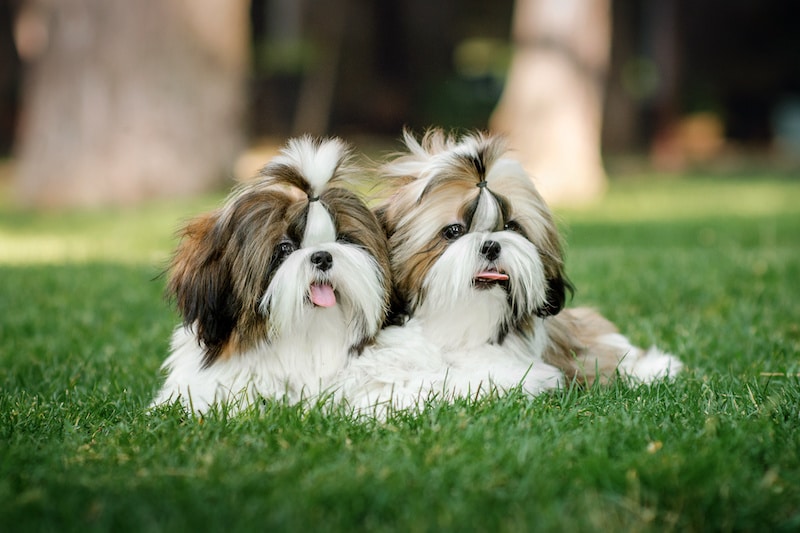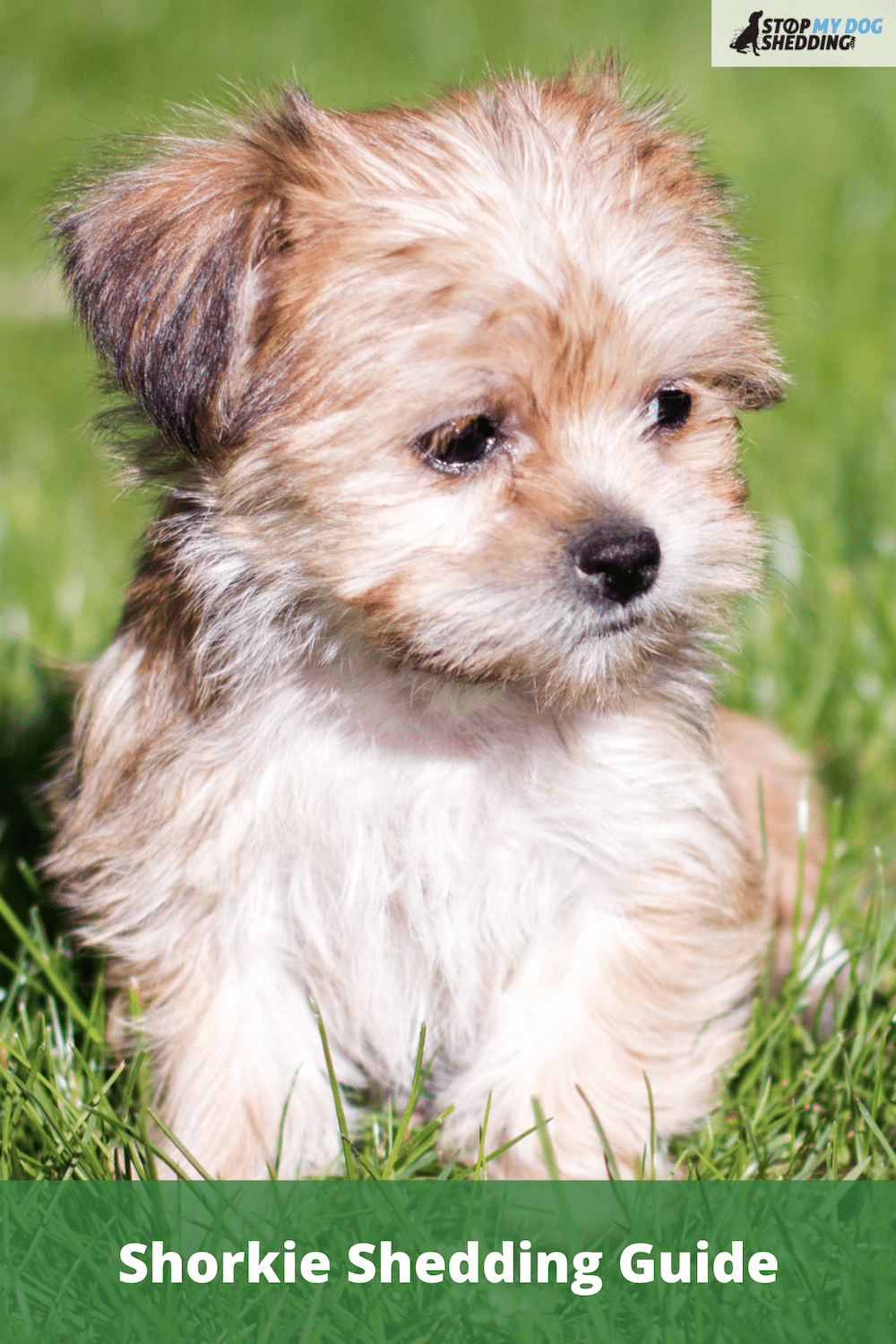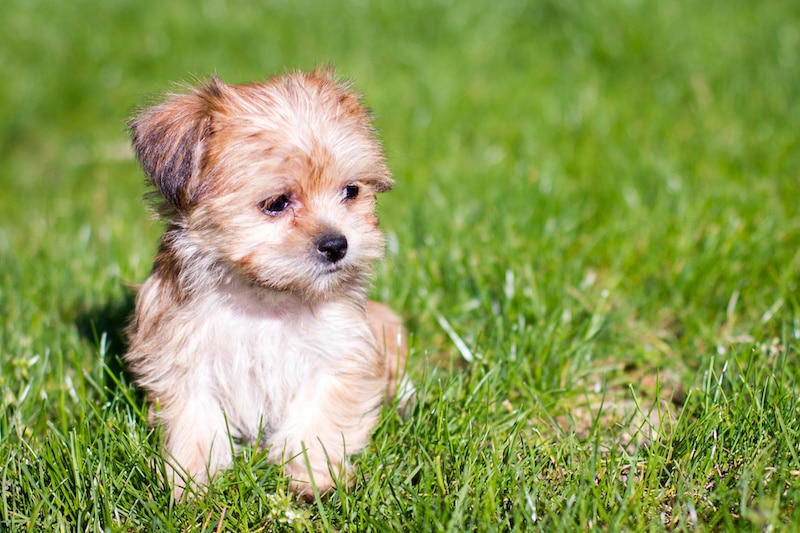The Shorkie is a Yorkshire Terrier and Shih-Tzu crossbreed that’s fluffy, handheld, designer, and adorable. You might have found a Shorkie for adoption, but perhaps you need to know more about the dog’s shedding before you make up your mind.
So, do Shorkies shed a lot? Shorkies don’t shed much due to both the Yorkie and Shih-Tzu’s respective low shedding propensities, but some Shorkies might be double-coated and shed seasonally. Either way, grooming a Shorkie is where the bulk of your time will likely be spent.
In this article, I’ll show you everything you need to know about Shorkie shedding and grooming and give you some useful insight into the breed’s background.
By the time you’re done reading, you’ll be in a much better position to decide whether or not you want to bring home this adorable little dog!
Recommended: Go here to see our top-rated dog hair blow dryers
Shorkie Shedding Guide
Usually, with mixed breeds, how much the dog sheds depends on which parent has the dominant genes.
That’s not so with the Shorkie. No matter which genes overpower the other, this dog sheds little.
That’s due to the lineage of the Shorkie.
As I mentioned in the intro, the dog is a crossbreed of two tiny dogs, the Shih-Tzu and the Yorkshire Terrier. To understand more about the Shorkie’s coat, we have to look at its parents.
The Shih-Tzu is a breed with a mid-length coat that keeps growing and growing. The coat often grows straight but can be curly or wavy.

The long, mostly smooth coat of the Shih-Tzu is part of the reason why this breed is low-shedding.
A dog will grow its fur in four stages: anagen, catagen, telogen, and exogen.
When a dog has longer fur, it takes more time to get from one stage to another. The fur will stay in telogen longer too, which is a period of rest.
Shih-Tzus are admittedly double-coated, which means the dog has an insulating layer close to its body and then the aforementioned longer fur atop that.
You will see some seasonal shedding out of a Shih-Tzu twice per year. Since the breed’s fur is longer, though, the rate of shedding isn’t terrible.
Okay, so that’s one of the Shorkie’s parents.
Now let’s look at the Yorkshire Terrier or Yorkie.

Yorkies just so happen to have long fur as well, which you already know is to the dog’s benefit in the shedding department.
Further, Yorkies are single-coated, so there is no seasonal shedding to worry about.
If I had to rate the shedding of a Shih-Tzu and a Yorkie on a scale of 1 to 5, I’d give them both a 2 out of 5. Thus, it only makes sense to assign the same rating to the Shorkie.
Your Shorkie can be single or double-coated depending on whether the dog is more Yorkie or Shih-Tzu.
If yours is a single-coated Shorkie, then its long fur will prohibit the breed from shedding much at all. After all, some people call Yorkies non-shedding, even if that’s not quite true.
Even if you have a double-coated Shorkie, you’ll only have to prepare for more shedding twice per year.
The first time of year this happens is in the summer as the weather begins to warm. Your Shorkie will shed some extra hair to get ready for the hot months ahead.
Then, as the seasons get colder and colder, your Shorkie will shed again for the winter. It will regrow a thicker coat that it then loses in the summer. Rinse, wash, repeat.
Both seasonal shedding periods can last several weeks on average.
Grooming Your Shorkie
As I alluded to in the intro, when caring for a Shorkie, it’s not so much about cleaning up loose hair. Rather, it’s about grooming and maintaining this cute dog’s coat.
Neither the Shih-Tzu nor the Yorkie is easy to groom, so you have to expect that that trait will carry down to the Shorkie no matter who its dominant parent is.
Although your Shorkie will have a long glossy coat that’s nice to brush; the trouble is that mats and tangles can develop. You’ll have to make it a habit of combing your dog to keep its fur tangle-free.
A slicker brush very much comes in handy for keeping debris out of your Shorkie’s coat as well as for preventing tangles and mats. If your dog’s fur has gotten a little tangled, then a gentle pass-through or two with the slicker brush ought to unfurl the knots.
If yours is a double-coated Shorkie, brushing will require more of your effort since you need to reach both the outer coat and the undercoat.
How often do you have to brush a Shorkie?
Near-daily brushing is probably best, especially if your Shorkie has a longer coat. And it would be best if you combed the dog to prevent debris and knots.
If yours is a single-coated Shorkie with shorter fur, then you can get away with brushing several times per week.
You definitely don’t want to skip brushing your Shorkie if she’s double-coated. During those seasonal shedding spikes, grooming will be a godsend.
That’s because brushing your dog collects the dead fur that’s on its way out but hasn’t yet fallen. You’re also spreading skin oils to keep your Shorkie’s skin moisturized. This will prevent your dog from itching and shedding.
Besides brushing, another huge facet of Shorkie maintenance is keeping up with the length of the coat.
You can either keep your Shorkie’s coat long or trim it into a puppy cut.
The latter allows you to brush your dog less frequently than every day. If yours is a show dog, then your Shorkie should have long, flowing locks.
Trimming a Shorkie’s coat into a puppy cut is easy. You can’t go wrong, as the look is supposed to be shaggy.
That said, if you’re concerned you might bald your dog in several spots, then perhaps it’s best to take your Shorkie to a groomer. They’ll cut your dog’s coat to perfection.
Keep in mind that your Shorkie will need another haircut about every six weeks.
How often do you bathe a Shorkie? At least every week or perhaps every two weeks, depending on what kind of mischief your dog gets up to. A longer coat will require more frequent baths as well.
Use lukewarm water for bathing your Shorkie. When using a shower or sink nozzle or hose, it’s important to keep it away from the dog’s nose, ears, and eyes.
Be sure to use a dog-friendly shampoo, never people shampoo. Rinse away all residue thoroughly, as any dry shampoo residue can irritate the Shorkie’s skin.
When you’re done bathing your dog, avoid towel-drying. All you’re doing by roughing up your Shorkie’s fur with the towel is creating knots and tangles that will be painful to remove later. Instead, use a purpose-built dog hair blower or air-dry your dog.
For more tips, check out this YouTube video on grooming a Shorkie:
Aside from brushing and bathing, be sure to check your Shorkie’s teeth as well as their nails every month or so. It’s best not to allow the dog’s nails to grow too long. And that shouldn’t be a problem if your Shorkie gets outside often and runs around or walks on hard pavement.
Recommended: Go here to see our top-rated dog hair blow dryers
About the Shorkie: Should You Adopt?
You may still have some questions about whether you should adopt a Shorkie. Allow me to address any qualms in this section!
The Shorkie, also known as the Shorkie Tzu or Yorkie Tzu, is a hybrid dog that was first bred into existence as a designer dog.
A newer breed, Shorkies are not recognized by the American Kennel Club or similar organizations, nor are there currently standards for what makes a Shorkie a Shorkie.
The temperament of a Shorkie is a lot like its parents. Shorkies are ultra-loyal, very affectionate, sweet, and bold. If it seems like your dog doesn’t realize how small she is, that’s common for Shorkies.
The average weight of a Shorkie varies based on the dog’s diet (of course) as well as which parent has the more dominant genes.
On the lower end of the weight spectrum, a Shorkie might weigh about five pounds. They can also weigh up to 15 pounds.
They measure between six and 14 inches tall, so they’re both small and lightweight enough that living in an apartment shouldn’t bother the Shorkie in the least.
If anything, your small digs will seem like a castle to this tiny breed!
Shorkies can be trained and socialized to get along with their canine compatriots. Without adequate socialization, Shorkies tend to become confrontational and territorial.
Remember, a Shorkie does not realize their own size, so they won’t care if it’s a bigger dog encroaching on their territory. The Shorkie will give the dog an earful!
Smaller dogs seem to be more natural friends of the Shorkie, and that’s also true of tinier animals such as cats. That said, socialization is still required.
Younger children and Shorkies don’t mix since the dog is so small and thus could be easily injured. Older kids who know how to handle a dog are a much better match for the Shorkie.
And as for barking, Shorkies will bark at the slightest provocation unless you teach them not to, so that’s something to consider, especially if you live in an apartment complex.
Bottom Line
The Shorkie is a smart, small four-legged friend that was bred solely as a designer dog.
With its lineage tied to both Yorkies and Shih-Tzus, this crossbreed is naturally low-shedding but can be challenging to groom. Nevertheless, the affectionate and tough Shorkie could be just the dog you’ve been looking for!
Do you own a Shorkie? If so, what has been your experience regarding shedding and grooming? Let us know in the comments section below.













Please note: By submitting a comment using the above comment form, you confirm that you agree with the storage and handling of your data by this site as detailed in our Privacy Policy.